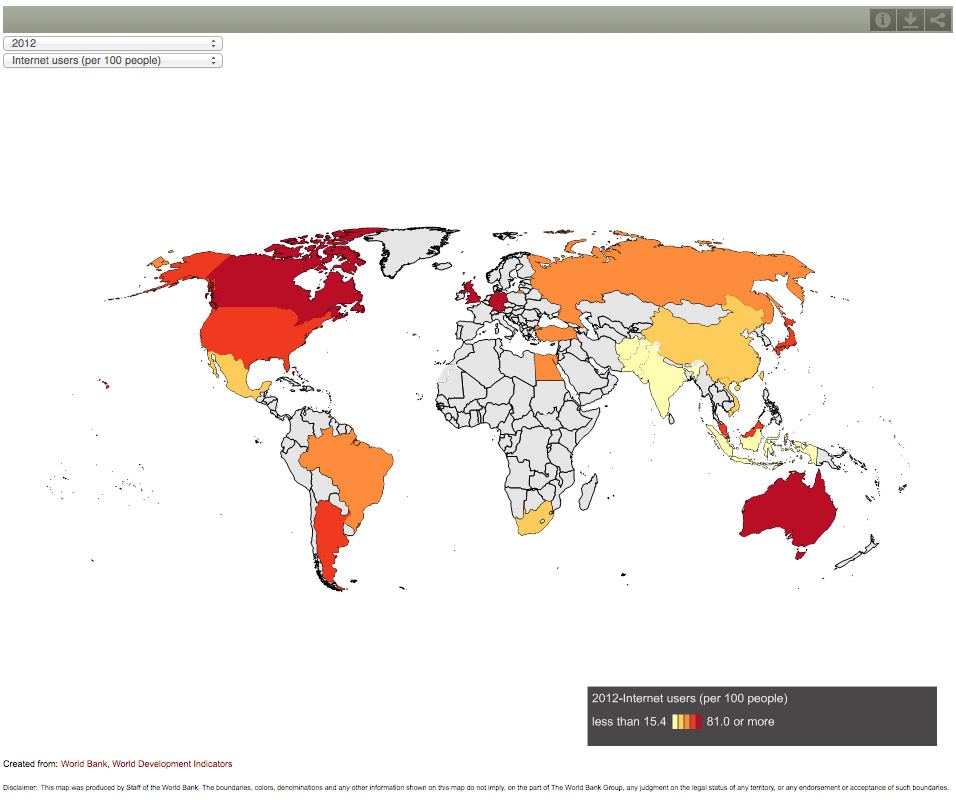 | The World Bank |
| World DataBank |
The World Bank is a non-governmental organization dedicated to reducing poverty and increasing prosperity around the world. Comprised of five institutions, it focuses on global development and lends money and provides grants to developing countries. In addition, the World Bank gathers data from individual countries on a variety of economic, social, and environmental factors. These factors, called development indicators, may be used to understand how a country is developing. The maps here show 20 development indicators, such as carbon dioxide emissions, number of Internet users per 100 people, life expectancy, and consumer price inflation, during the years 2000–2012. By mapping such data for all countries, the World DataBank provides a snapshot in time of how global development is taking shape.
(Click on the image below to enlarge the map.)

| Starting a Conversation: Respond to “World DataBank” | |
 | In the text boxes below, consider how this interactive map presents information by responding to the following questions: |
Question
Consider the design of these maps. How do the creators use color to chart global development? Does the legend in the lower right corner supply sufficient information to distinguish the development of one country from another? Why or why not?
Question
Take a close look at the life expectancy map for 2010. Which countries fare well, and which don’t? How does the United States fare on this development indicator? Are you surprised by this information?
Question
Inflation, or the rate at which prices for goods and services rises, is a very significant indicator of a nation’s economic stability. Compare the 2010 inflation map to the one from 2000. What changes do you notice?
Question
Scroll through the list of indicators available in this set of maps. As two-dimensional representations of data, these thematic maps offer only a glimpse of the full data about a country or region. Consider what information is not represented. Are there other development indicators you wish to know about? What questions might you ask to gather more information about any of the indicators featured here?